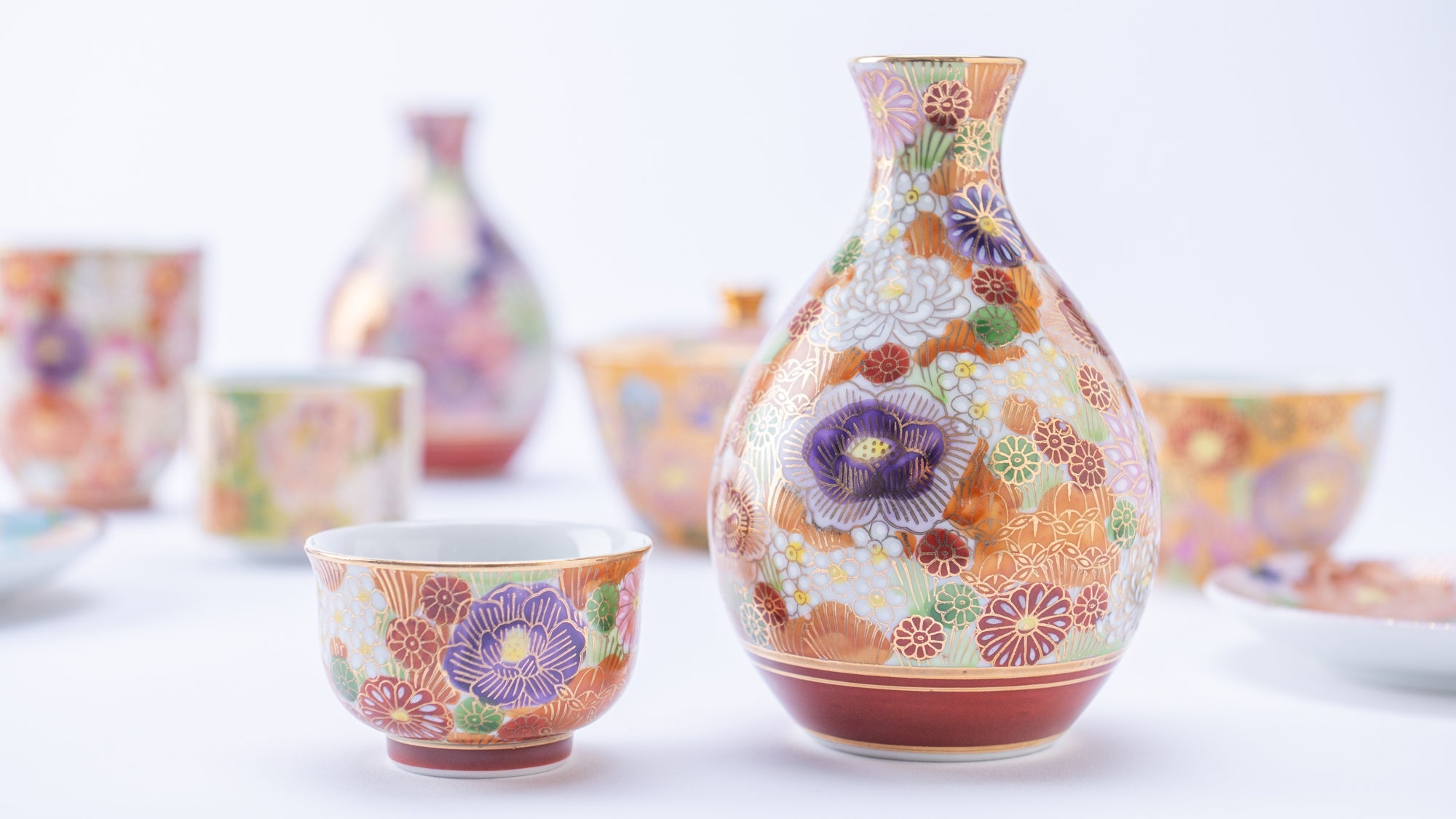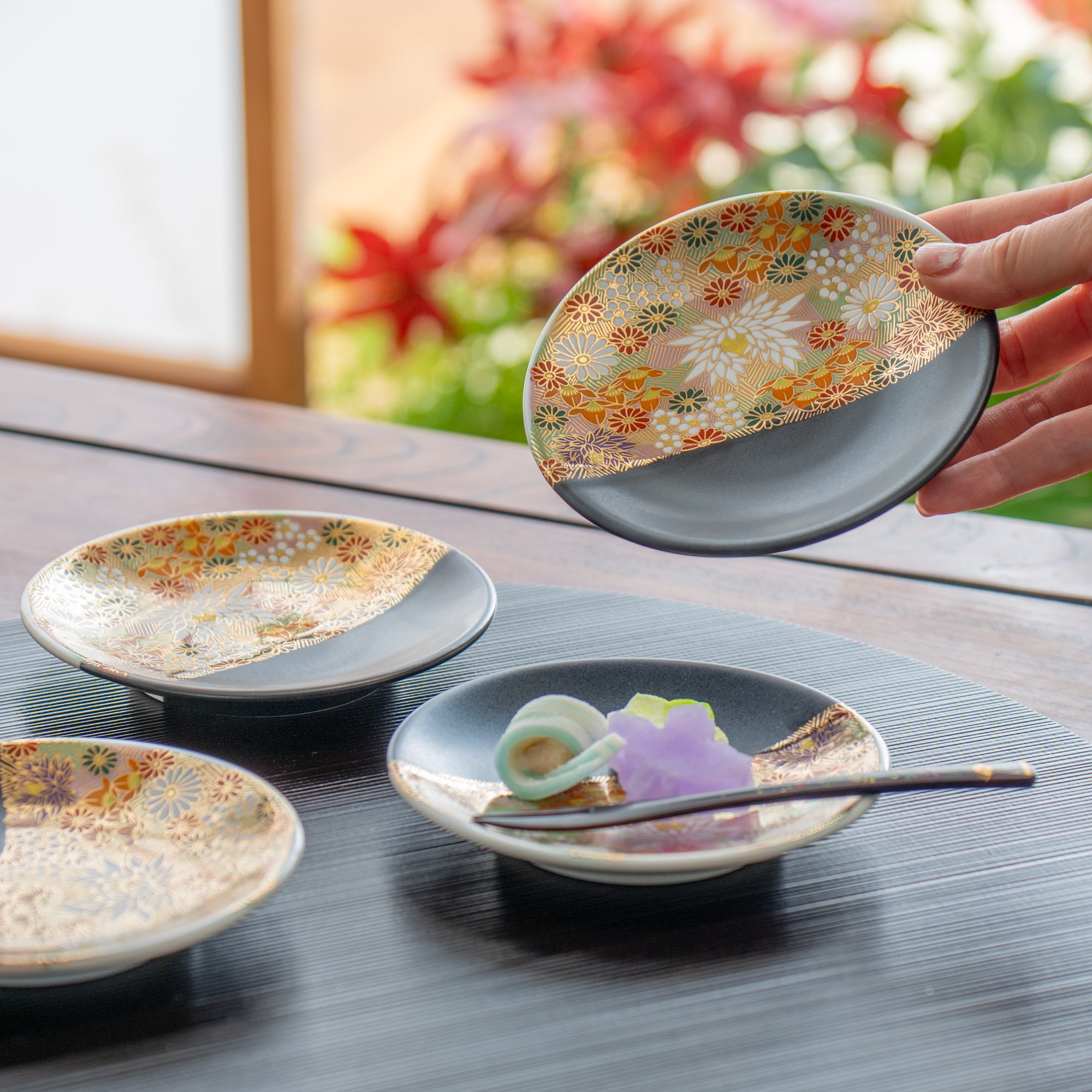
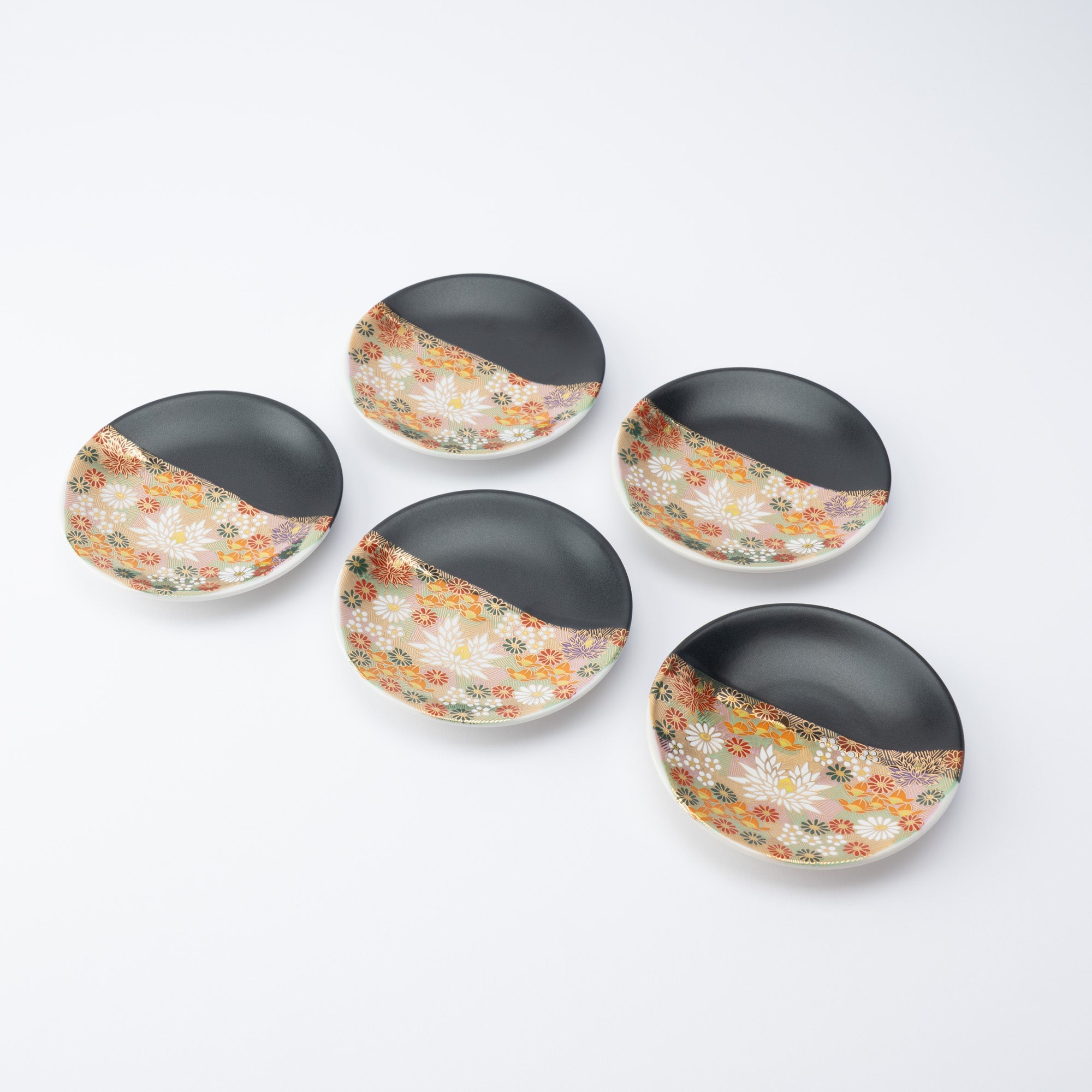
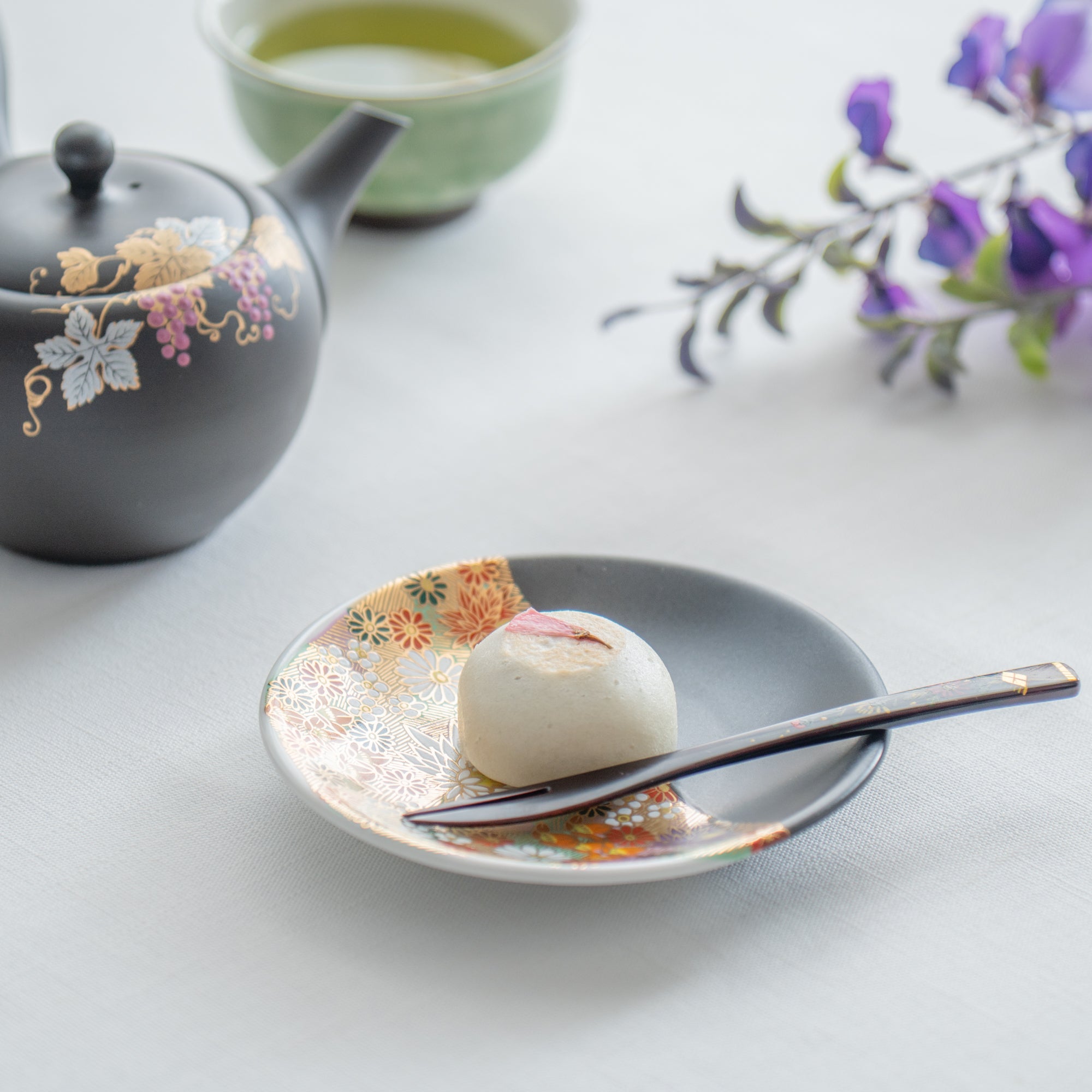
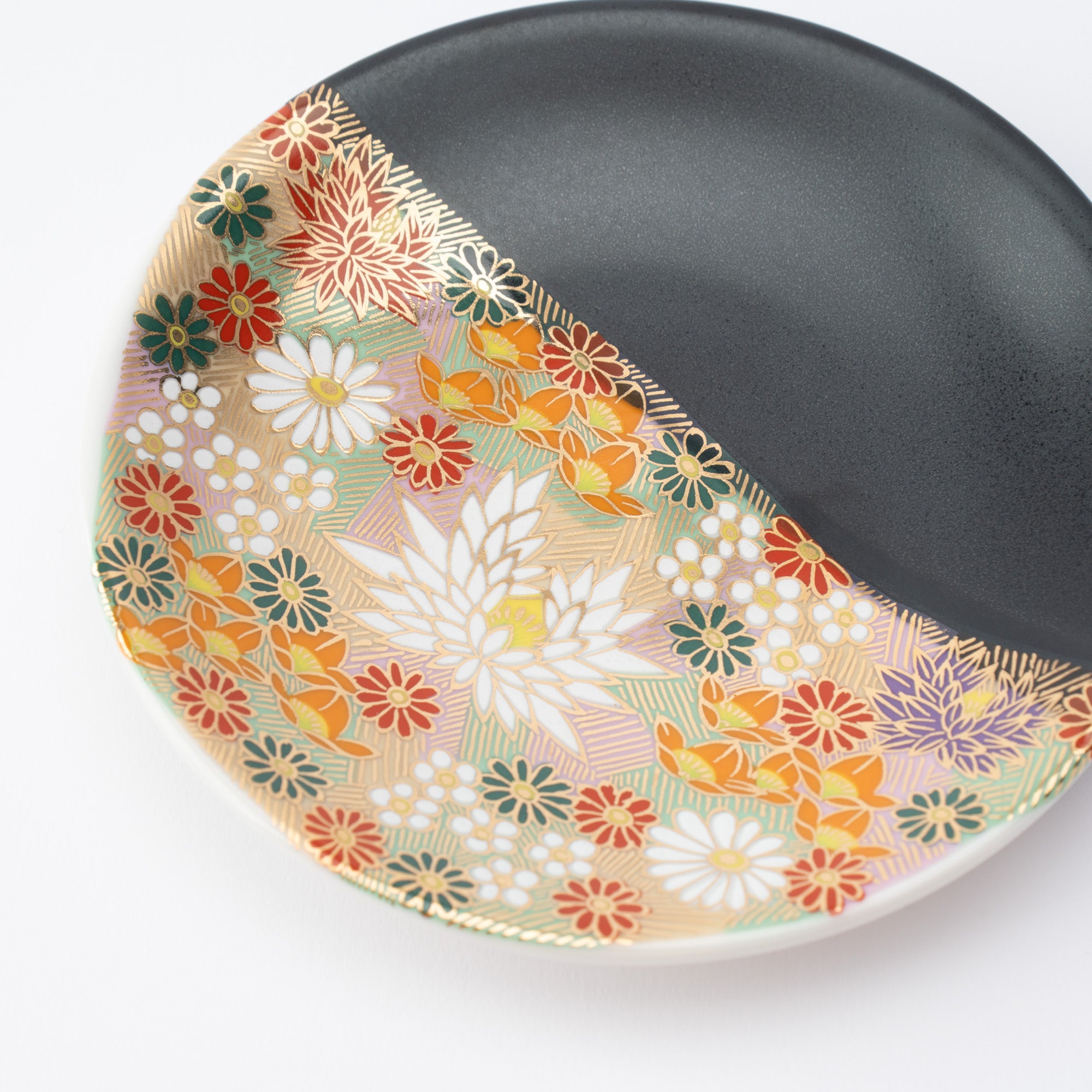
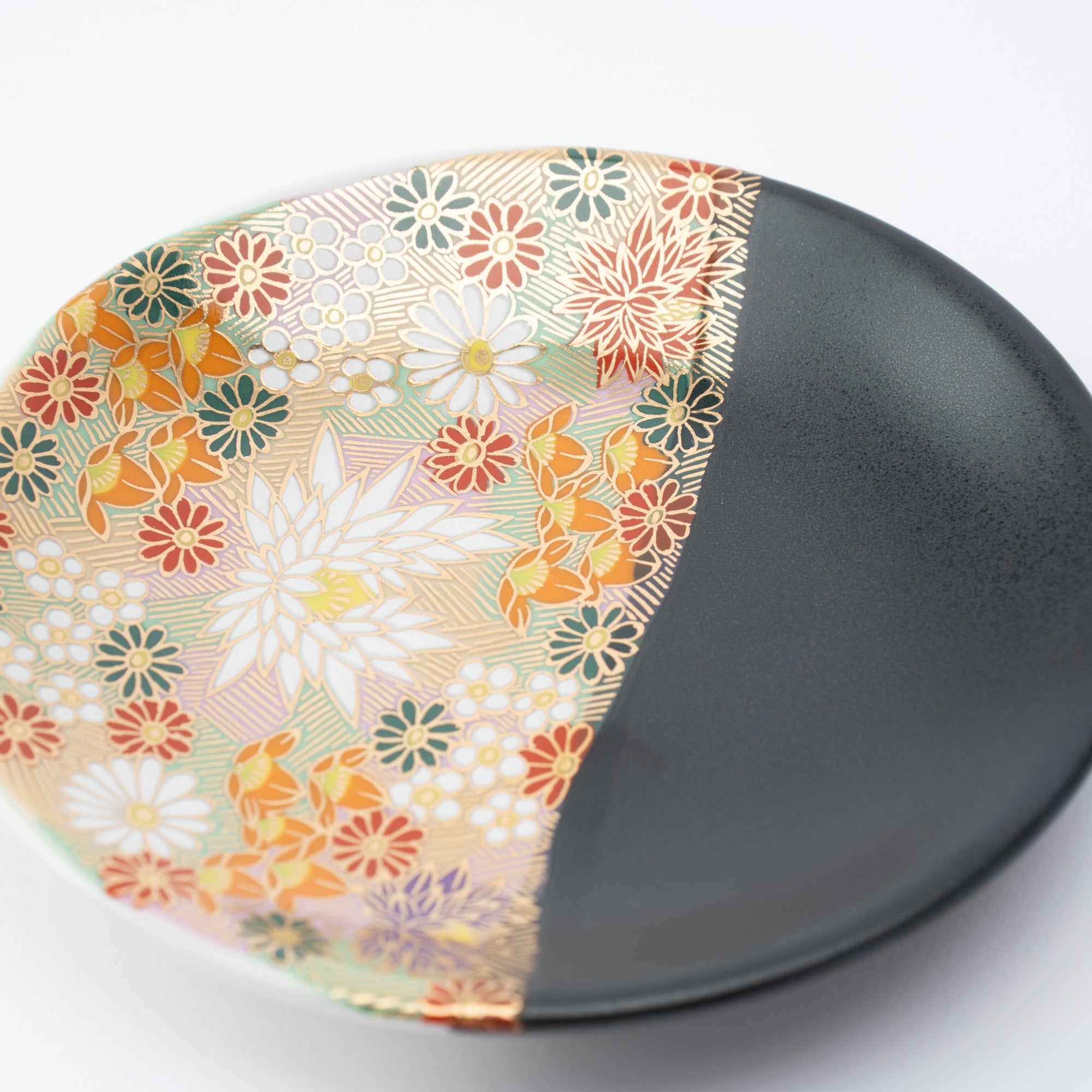
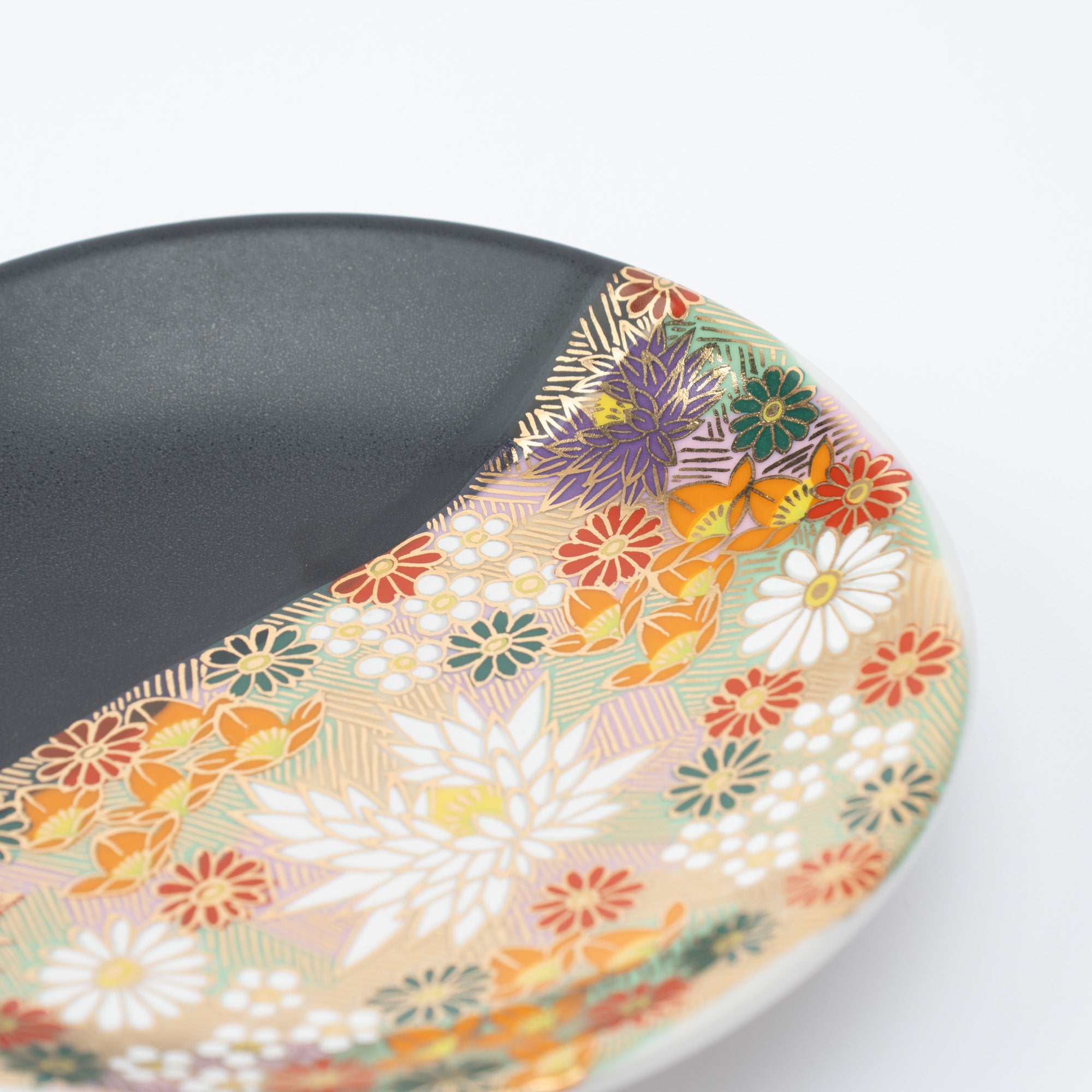
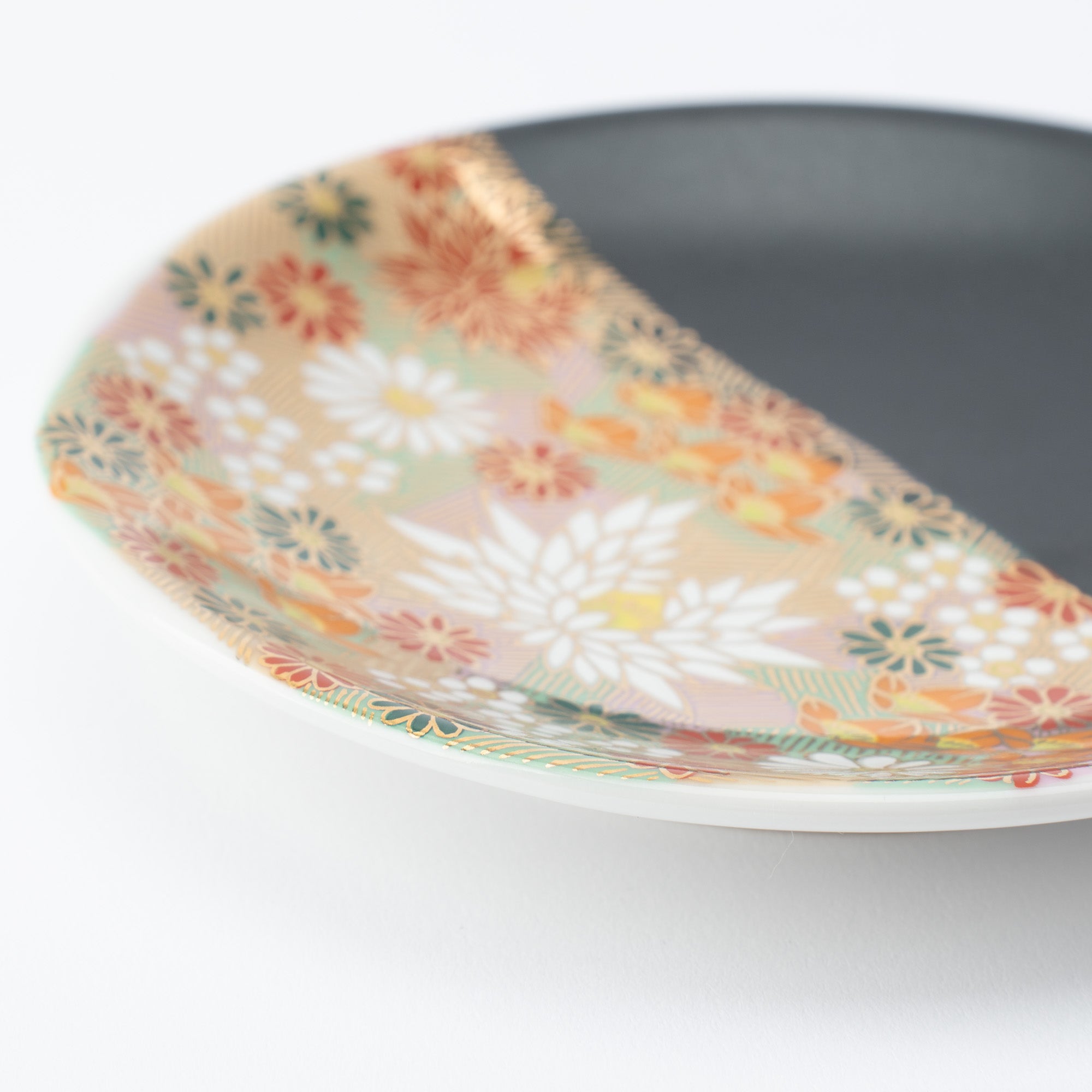
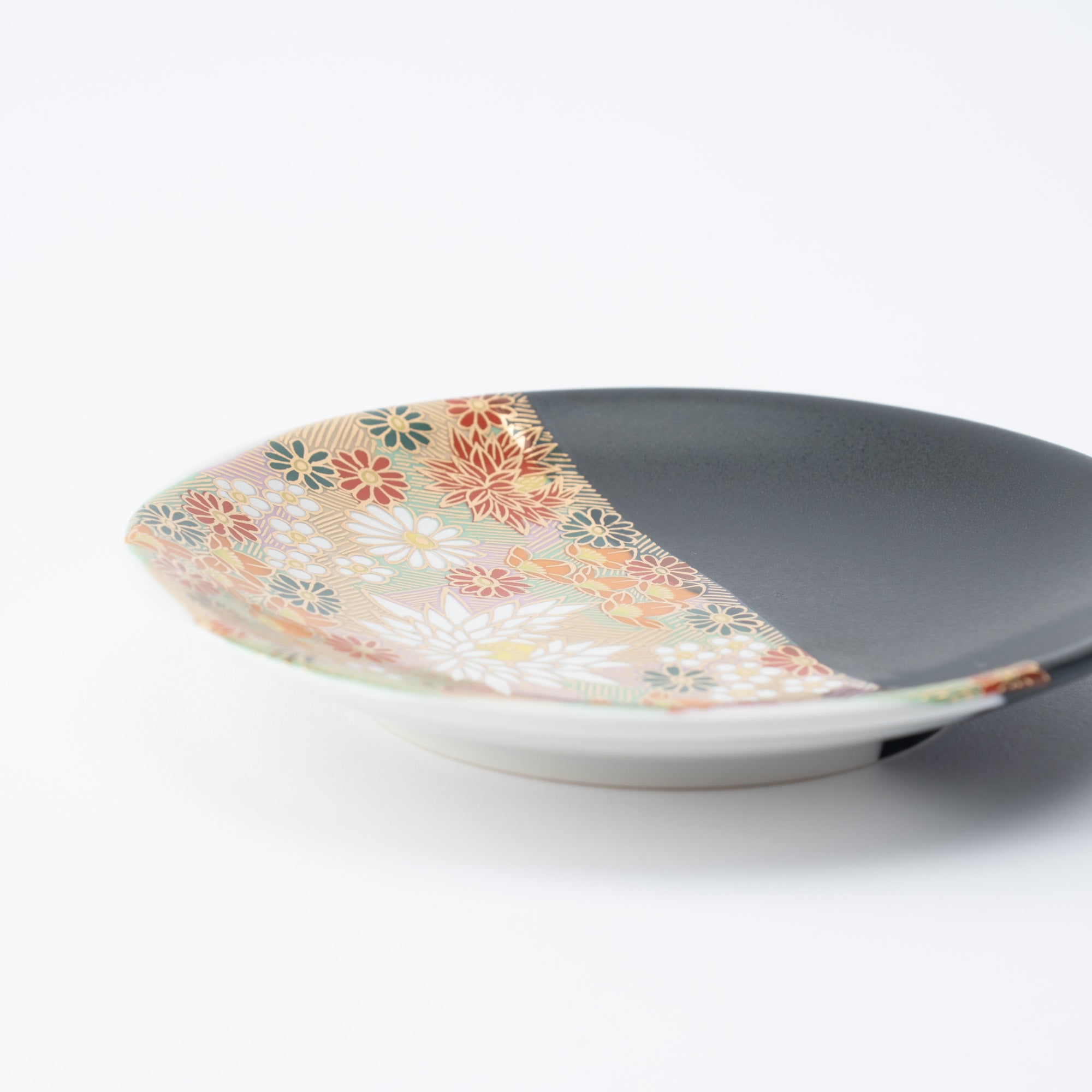
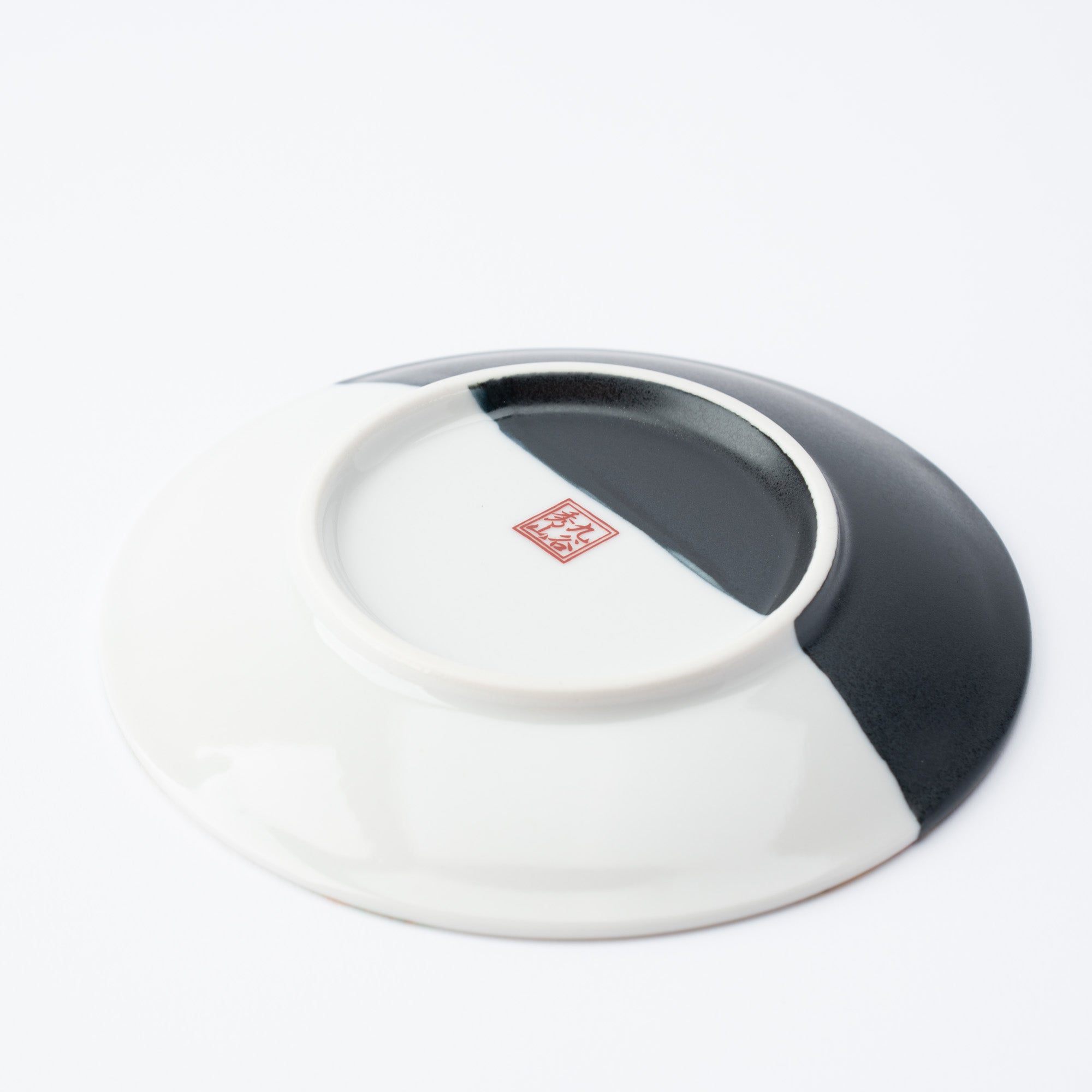
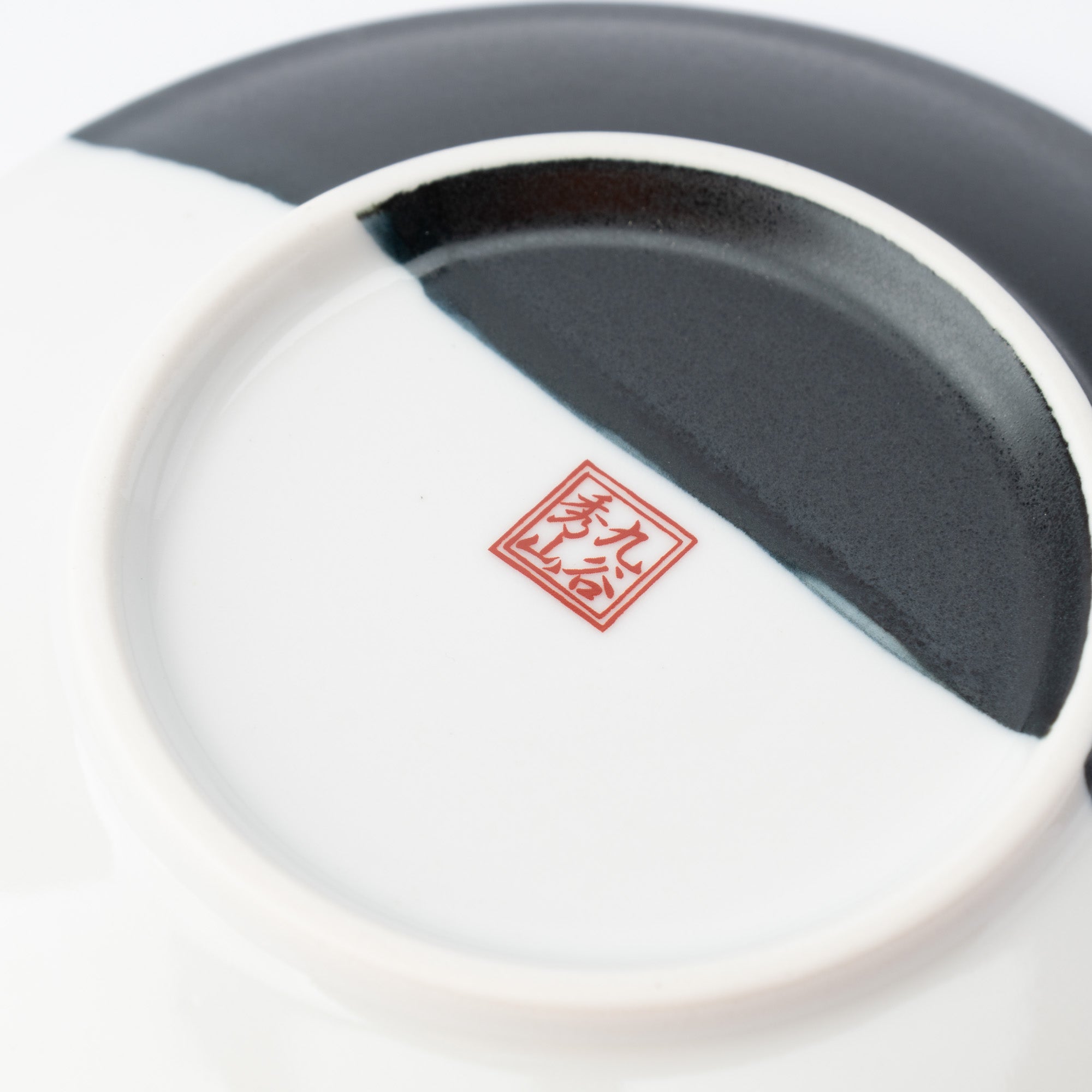
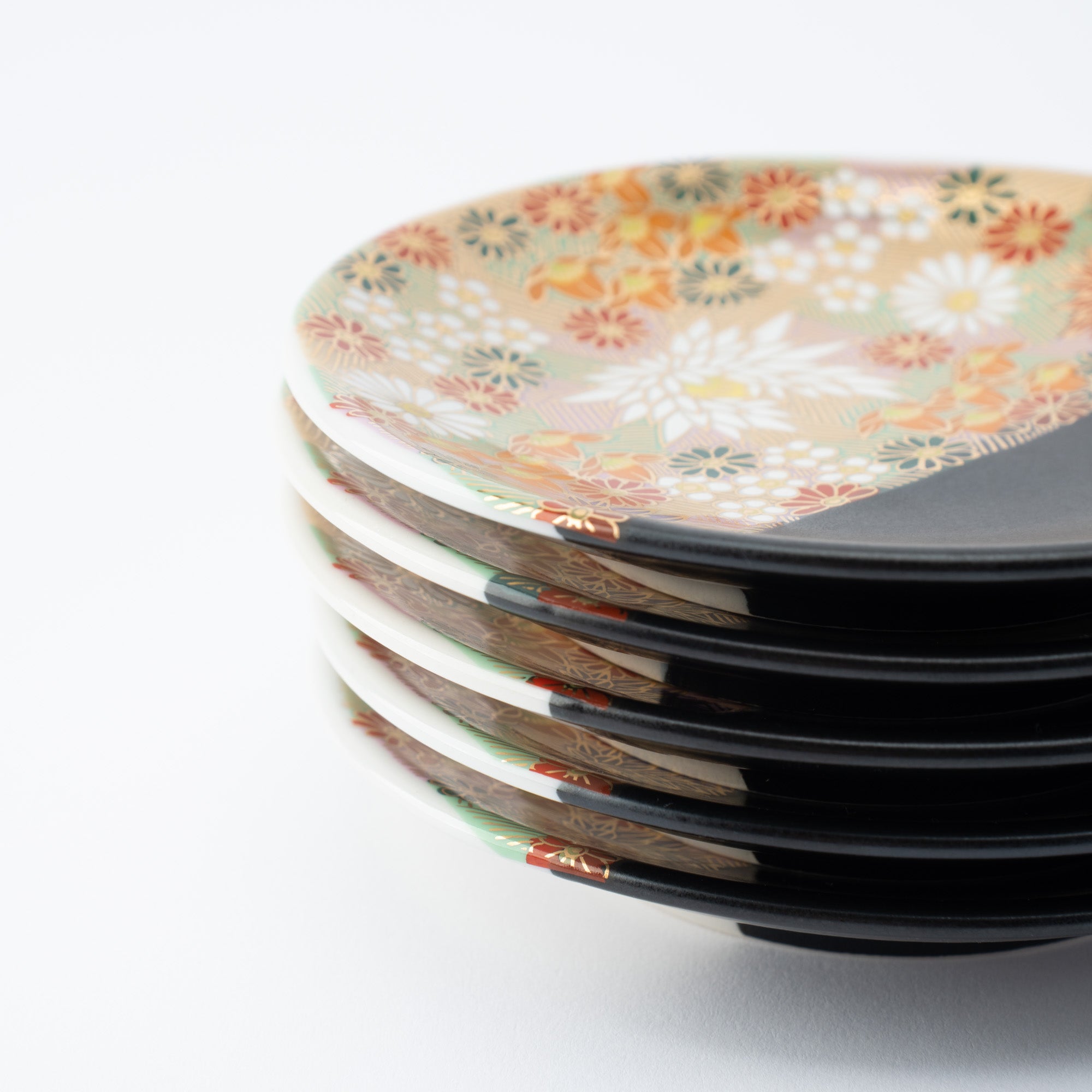
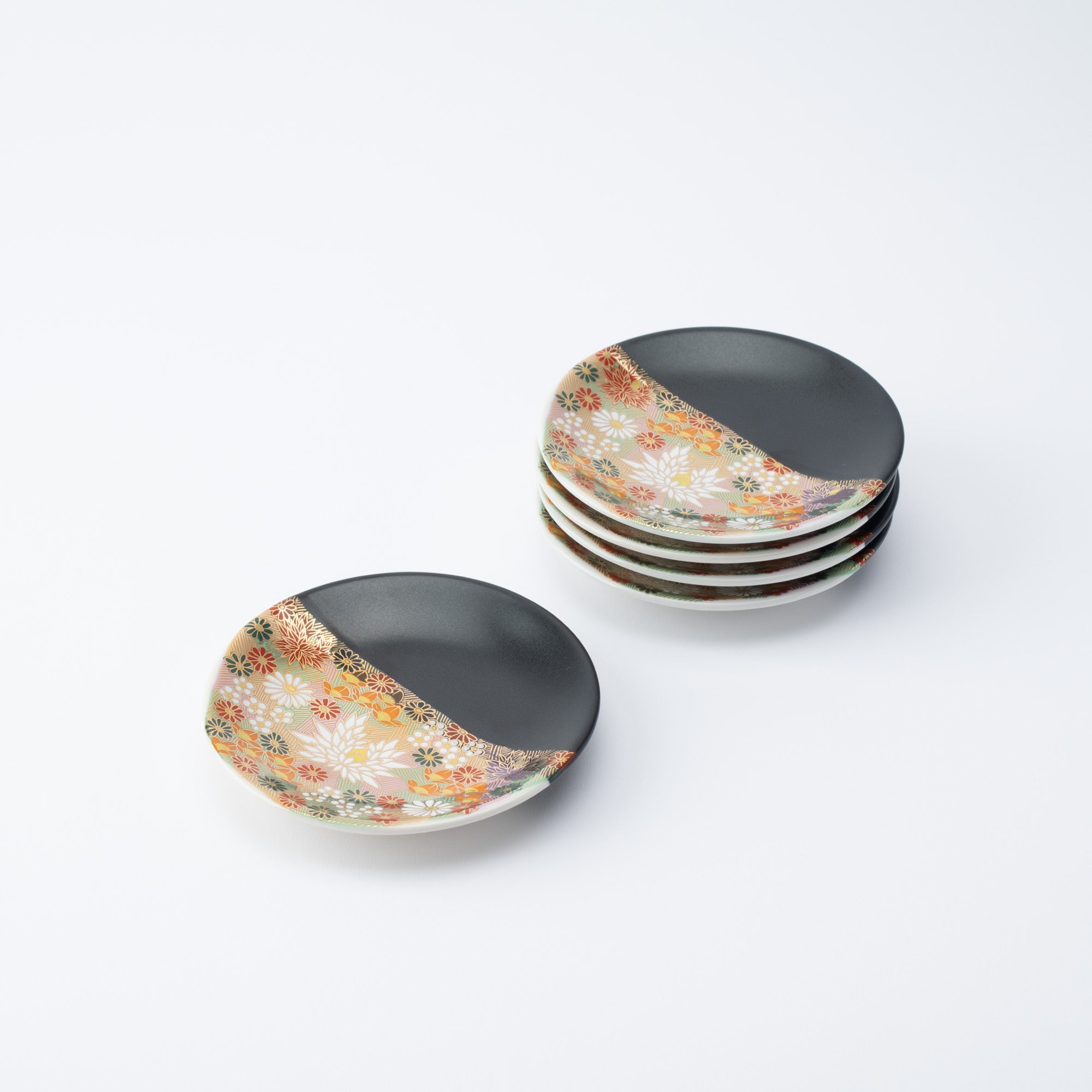
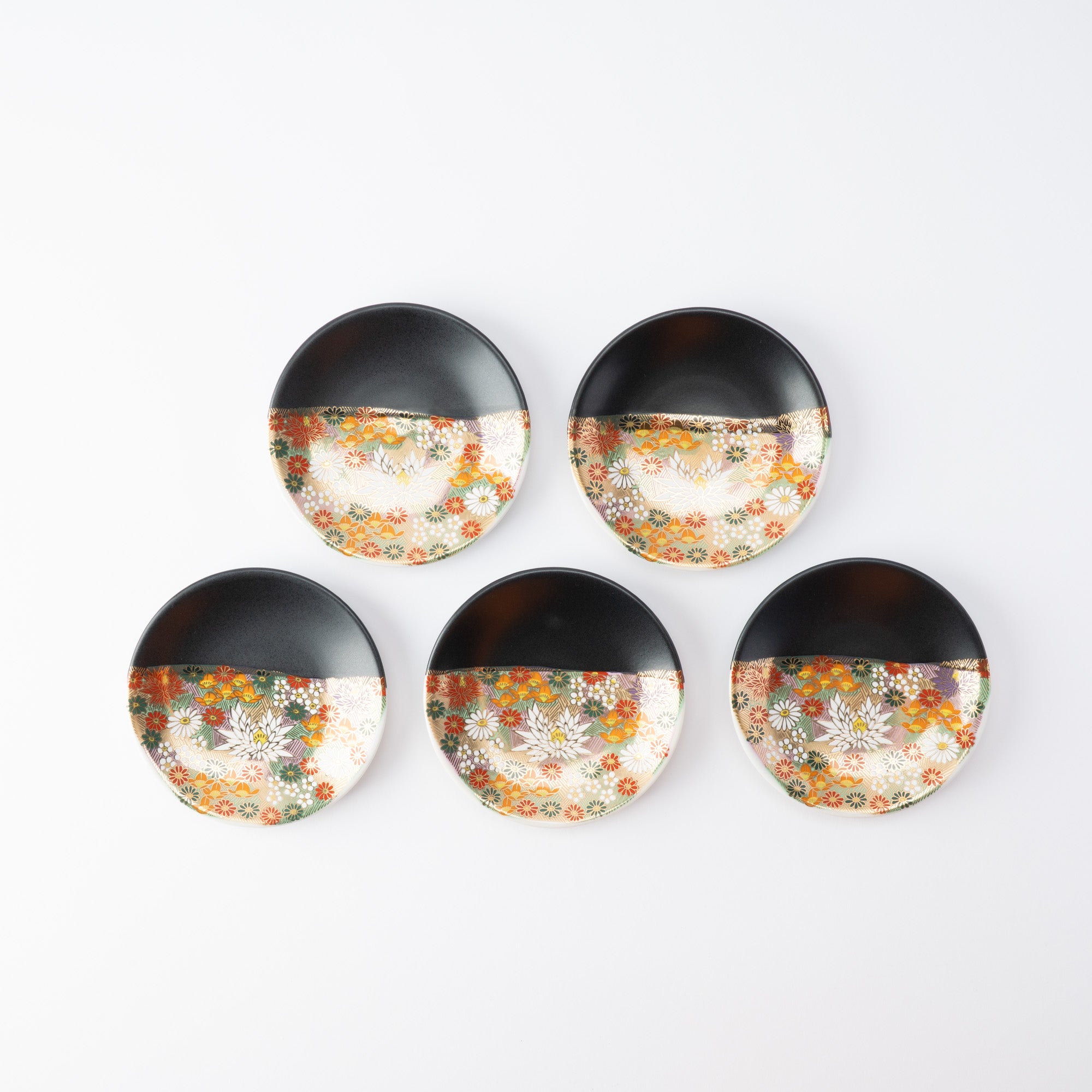
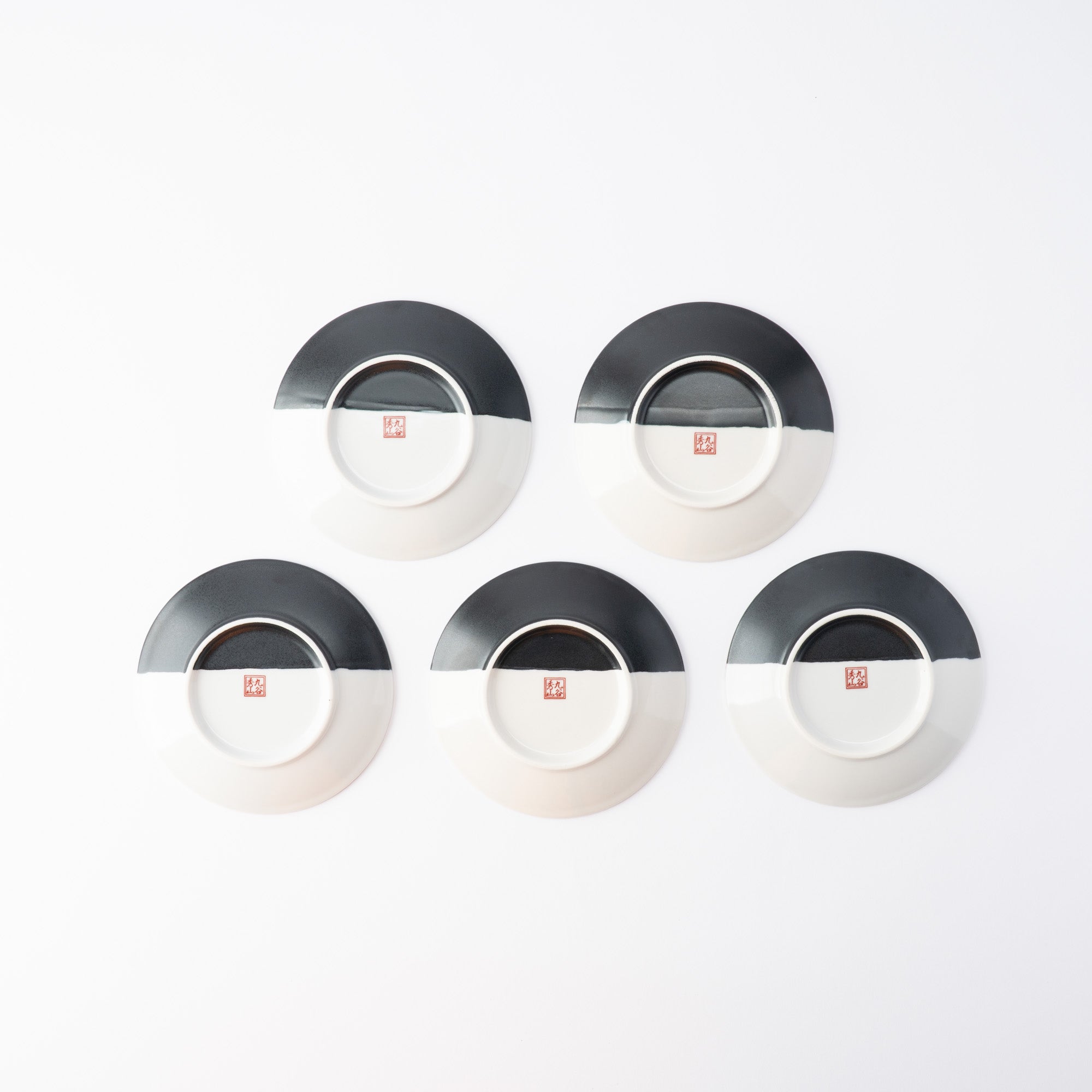
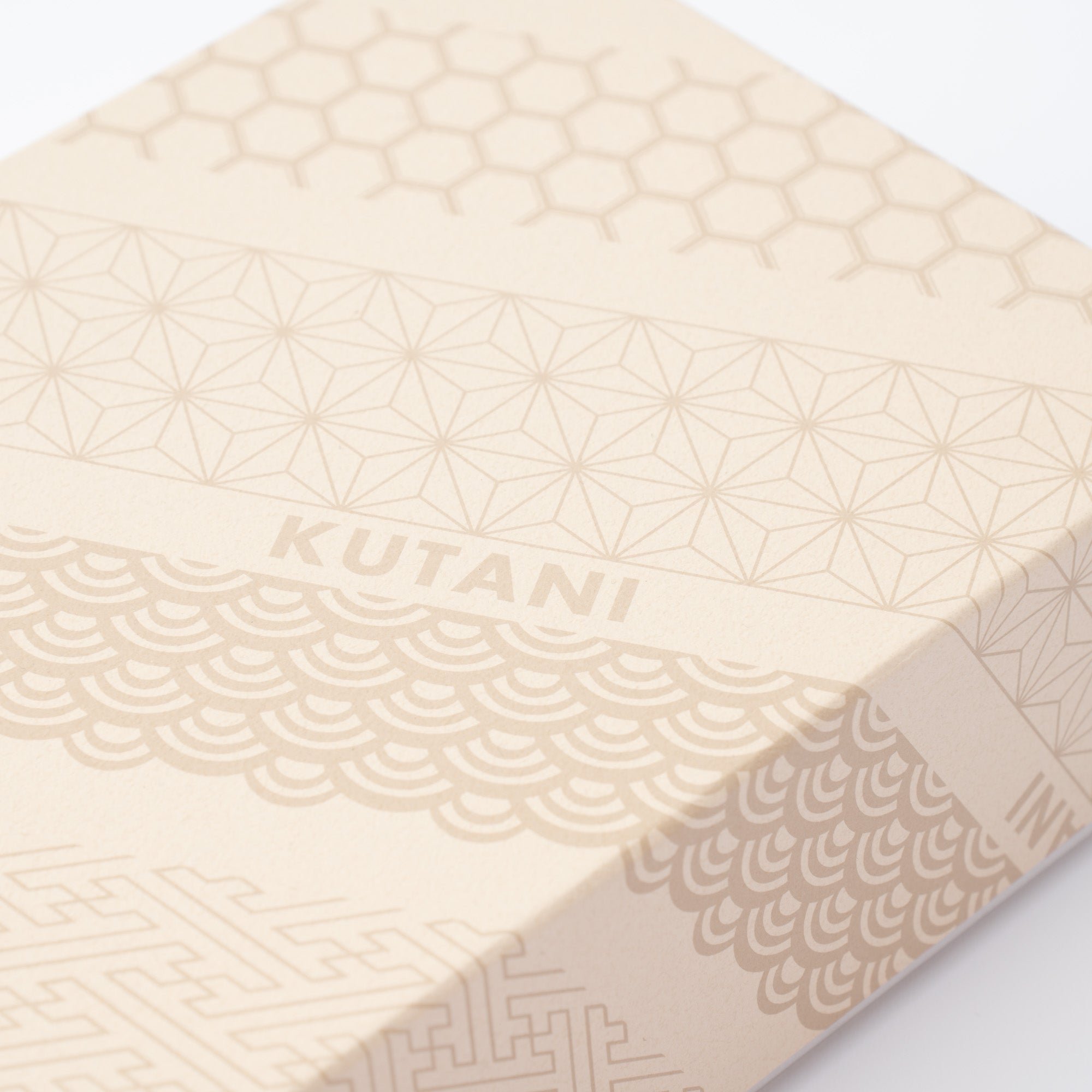
Hanazume Sauce Plate Set
Estimated Shipping Widget will be displayed here!
This small plates set features the beautiful hanazume style, meaning "filled with flowers," one of the most iconic designs of Kutani ware that has been handed down since the Taisho period (1912–1926 CE).
The contrast between the matte black and the richly decorated hanazume area is striking, with each flower delicately outlined in gold. It conveys a timeless sense of elegance and refinement.
Perfect for serving wagashi (traditional Japanese sweets), the size also suits small portions of food such as tsukemono pickles or aemono (sauced or seasoned dishes). It can also be used as a charming saucer for placing a teacup.
DETAILS
| Quantity | Set includes 5 plates |
| Size | D 12.2 cm (4.8 in) |
| Material | Porcelain |
| Microwave | No |
| Dishwasher | No |
Crafts
Kutani ware is a pottery produced in the Kaga region of Ishikawa Prefecture, with a history spanning over 350 years. It is characterized by the heavy brilliance of the five colors of navy blue, red, purple, green, and yellow that are applied to the bold and daring lines. Its long history has evolved through the tireless efforts and enthusiasm of people who have sought innovation while maintaining tradition.
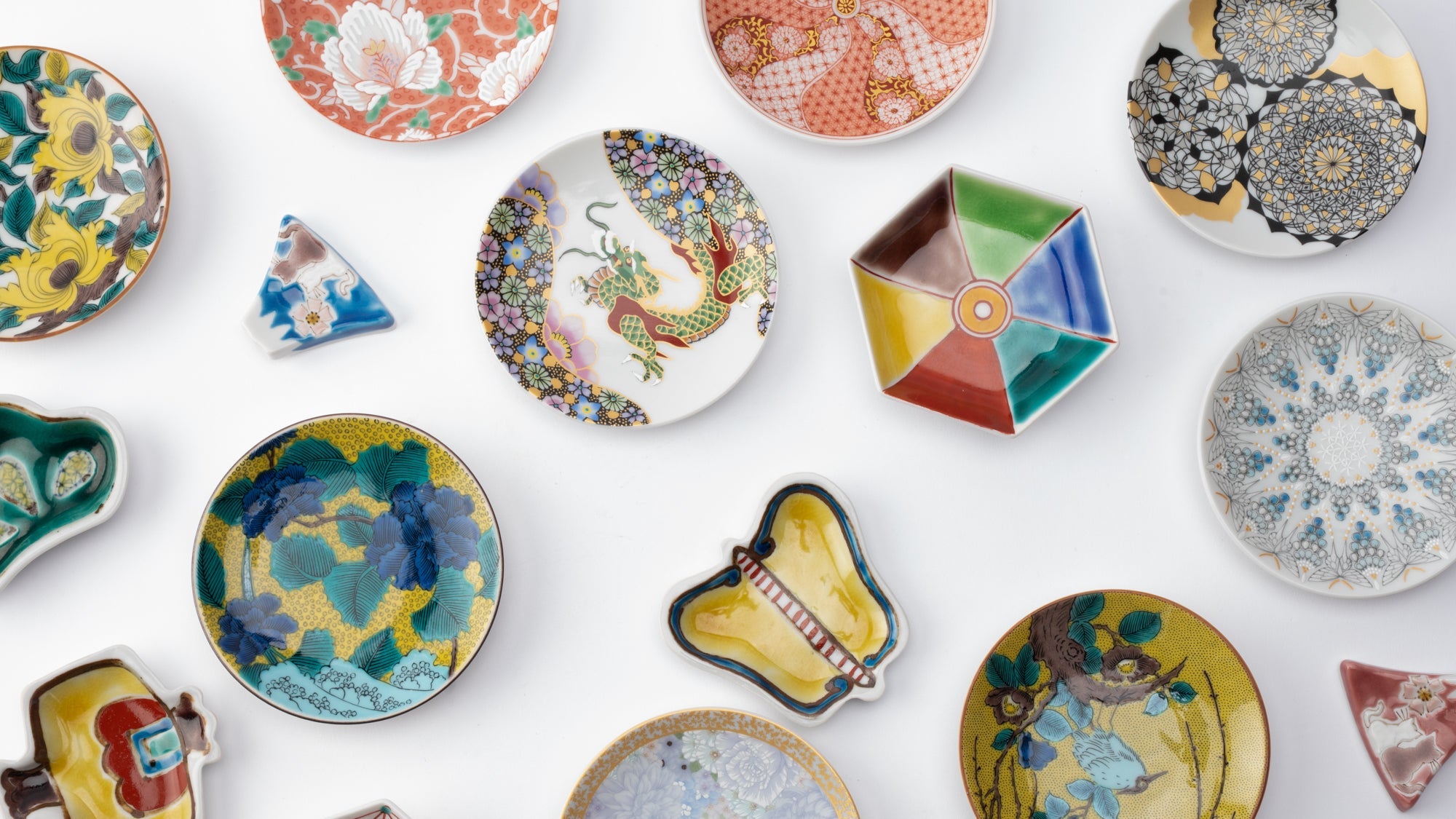
Choose options















Sauce Plates
Ranging in style from elegant to kawaii, our collection of Japanese sauce plates is perfect for when you need something small yet versatile for your dining table. Conveniently sized for soy sauce and other condiments accompanying sushi or noodles, these dishes are also just right for bite-sized cheese, nuts, and appetizers. A must-have for any meal.
This category includes plates with diameters under 12.9 cm (5.1 in).

Hanazume
Hanazume is a classic Kutani ware technique in which flowers are intricately drawn across an entire surface. After the first firing, detailed floral designs are outlined with gold paint before the final firing. This decorative method, introduced by Shiro Mizuta in Kanazawa City during the Taisho period (1912 CE–1926 CE), beautifully combines vibrant flowers with elegant gold to create stunning pieces.
